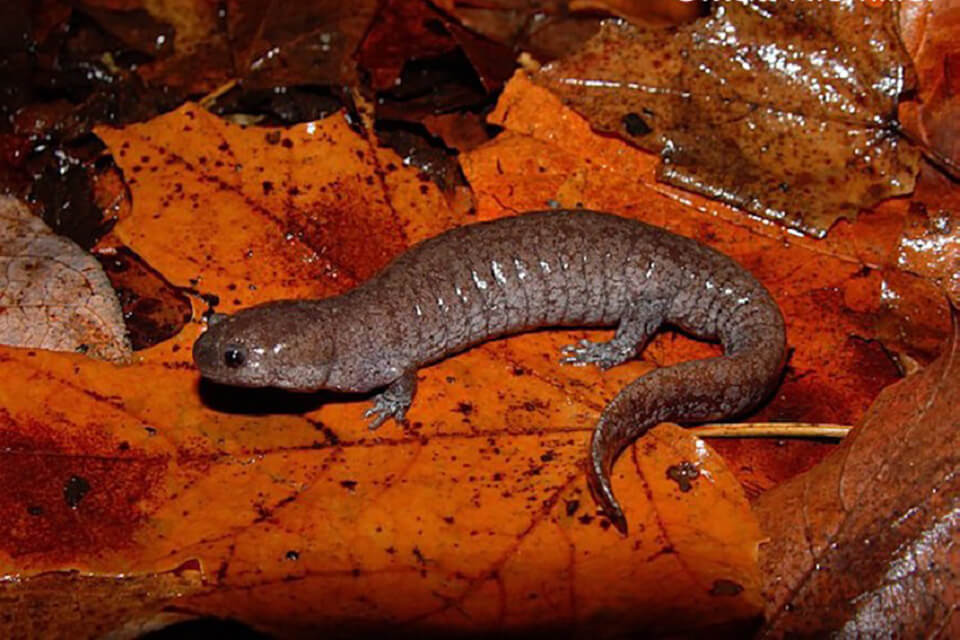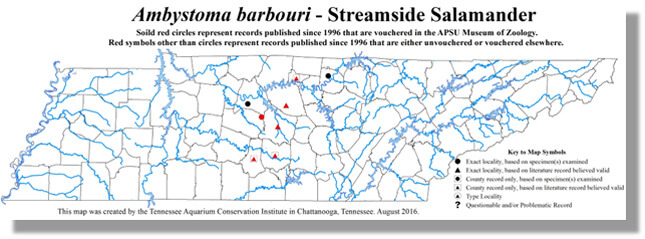Species profile: Streamside salamander (Ambystoma barbouri)
Salamander Background
Current Listing Status and Occurrence
The streamside salamander was listed as State Endangered within Tennessee in August 20181. The Streamside Salamander is classified as an at-risk species by the U.S. Fish and Wildlife Service (USFWS). The USWFS was petitioned in 2010 on a 90-day finding to list species within the Southeastern United States as Endangered or Threatened with critical habitat. A proposed determination date for the federal listing of the species is set for 20232. The lead state agency regarding the streamside salamander is the Tennessee Wildlife Resource Agency (TWRA).
The salamander occurs in Indiana, Ohio, central Kentucky, West Virginia, and recently the Central Basin of Tennessee. Currently, streamside salamanders are considered uncommon across the state and are found in random populations centered within middle Tennessee1 including areas in Davidson, Rutherford, Sumner, Wilson, and Williamson counties. The population decline has been attributed to habitat loss due to the conversion of forested streams to pasture and residential areas.
How they fit into permitting / surveys
Due to the state endangered listing, the Streamside Salamander is protected under Tennessee State Law. Project areas that encompass stream impacts in known watershed habitats may require reviews by the Tennessee Natural Heritage Program (TN-NHP) and TWRA. TWRA reviews project area locations and reports if the streamside salamander has occurred within a certain radius of the project location. This may increase permitted special conditions that could include construction requirements intended to prevent adverse impacts to potential streamside salamander populations presumed to be present. Additional construction requirements could include a prohibition of in-stream work between December 15th and May 31st, expanded buffer requirements or other requests.
Streamside salamander surveys can be utilized by project applicants and agencies to confirm if streamside salamander, eggs, or larvae are present or absent within a specific project area. The streamside salamander has a prolonged breeding season that lasts from December to April, and is variable based upon weather conditions. Streamside salamander surveys can be conducted prior to development to help inform state agencies of salamander presence/absence on the project site. If a project applicant elects to have a streamside salamander presence/absence survey completed, two surveys would be required with a minimum of 45 days apart, and both survey dates should occur between December 15 and March 15. Project applicants and agencies can review the surveys to assess the project impacts to the streamside salamander. Agencies have the potential to revise or eliminate certain permitted special condition requirements if streamside salamanders are absent within the project area and would therefore not be adversely impacted.



